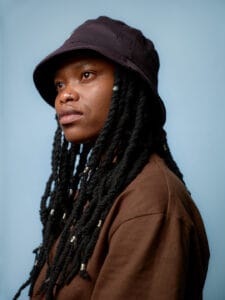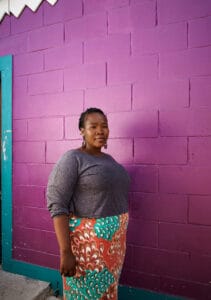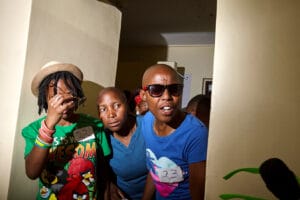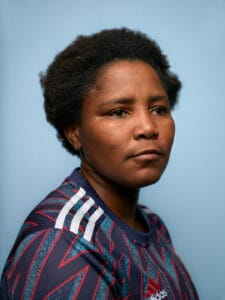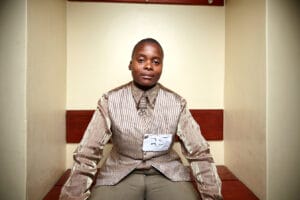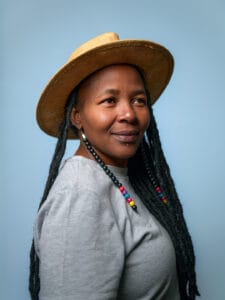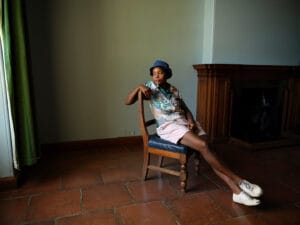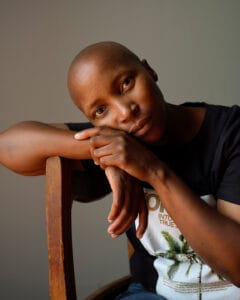Join GLAAD and take action for acceptance.
Trending
- Science Meets Style:+Life Unveils HIV Unwrapped at New York Fashion Week
- Election 2025: Virginia Gubernatorial, Lt. Governor, and Attorney General Candidates on the Record on LGBTQ Issues
- WATCH: G FLIP Talks Channeling New 80’s Rock Persona ‘Butch Springsteen’ For New Album “Dream Ride”
- Meredith Marks Hosts a Special Evening with GLAAD Ahead of the 40th Anniversary
- GLAAD Centers Black Queer Voices at United States Conference on HIV & AIDS
- From “Hacks” to “The Traitors,” LGBTQ Stars Shine at the 2025 Emmy Awards
- Fact Sheet: Debunking “Trans Terrorism” and Other False Claims in High-Profile Crimes
- Don’t miss “The Groomsmen: Second Chances” coming to your TV this Saturday!
Where We Are on TV 2023-2024
ASEXUAL – An adjective used to describe people who do not experience sexual attraction (e.g., asexual person). A person can also be aromantic, meaning they do not experience romantic attraction. (For more information, visit asexuality.org.)
BISEXUAL – A person who has the capacity to form enduring physical, romantic, and/or emotional attractions to those of the same gender or to those of another gender. People may experience this attraction in differing ways and degrees over their lifetime. Bisexual people do not need to have had specific sexual experiences to be bisexual; in fact, they need not have had any romantic or sexual experience at all to identify as bisexual.
BISEXUAL UMBRELLA, BISEXUAL+ – An encompassing term for people with the capacity to be attracted to more than one gender. Includes people who identify as bisexual, pansexual, fluid, queer, and more.
GENDER EXPRESSION – External manifestations of gender, expressed through a person’s name, pronouns, clothing, haircut, behavior, voice, and/or body characteristics. Society identifies these cues as masculine and feminine, although what is considered masculine or feminine changes over time and varies by culture. Typically, transgender people seek to align their gender expression with their gender identity.
GENDER IDENTITY – A person’s internal, deeply held sense of their gender. Everyone has a gender identity. For transgender people, their gender identity does not match the sex they were assigned at birth. Many people have a gender identity of man or woman (or boy or girl for younger people). For others, their gender identity may not fit neatly into one of those two choices (see nonbinary below.) Unlike gender expression (see above), gender identity is not visible to others.
LATINE – A gender-neutral way of referring to people from or whose ancestors are from Mexico, Central America, South America, and the Caribbean living in the United States. The term originated in academic circles and has been increasingly accepted as a more inclusive term. In previous reports, GLAAD has used “Latinx” by this definition.
NONBINARY – Term used by some people who experience their gender identity and/or gender expression as falling outside the categories of man and woman. They may define their gender as falling somewhere in between man and woman, or they may define it as wholly different from these terms.
QUEER – An adjective used by some people, particularly younger people, whose sexual orientation is not exclusively heterosexual (e.g., queer person, queer woman). Typically, for those who identify as queer, the terms lesbian, gay, and bisexual are perceived to be too limiting and/or fraught with cultural connotations they feel do not apply to them, though some people may use both queer and a more specific label interchangeably for themselves.
TRANSGENDER – An adjective to describe people whose gender identity differs from the sex they were assigned at birth. People who are transgender may also use other terms, in addition to transgender, to describe their gender more specifically. It is important to note that being transgender is not dependent upon physical appearance or medical procedures. A person can call themself transgender the moment they realize that their gender identity is different than the sex they were assigned at birth.
Table of Contents
Share this
View Past Years’ Reports
MEASURE THE MOVEMENT
Your gift allows us to track the impact of our work, helping us better understand the state of acceptance and address the gaps with advocacy — like pushing for more trans representation in movies.
More Publications from GLAAD
The GLAAD Studio Responsibility Index (SRI) maps the quantity, quality and diversity of lesbian, gay, bisexual, transgender, and queer (LGBTQ) people in films released by the seven major motion picture studios during the 2016 calendar year. GLAAD researched films released by 20th Century Fox, Lionsgate Entertainment, Paramount Pictures, Sony Pictures, Universal Pictures, Walt Disney Studios and Warner Brothers, as well as films released by four subsidiaries of these major studios. The report is intended to serve as a road map toward increasing fair, accurate and inclusive LGBTQ representation in film.
Each year through extensive polling and research, GLAAD takes an in-depth look at the state…
Nearly Invisible is the first GLAAD report that analyzes the inclusion of lesbian, gay, bisexual, transgender, and queer (LGBTQ) characters in primetime Spanish-language scripted television airing in the United States between July 1, 2015 and June 30, 2016. The report also analyzed the inclusion of characters of African and indigenous descent as well as characters with disabilities.
The Where We Are on TV report analyzes the overall diversity of primetime scripted series…

